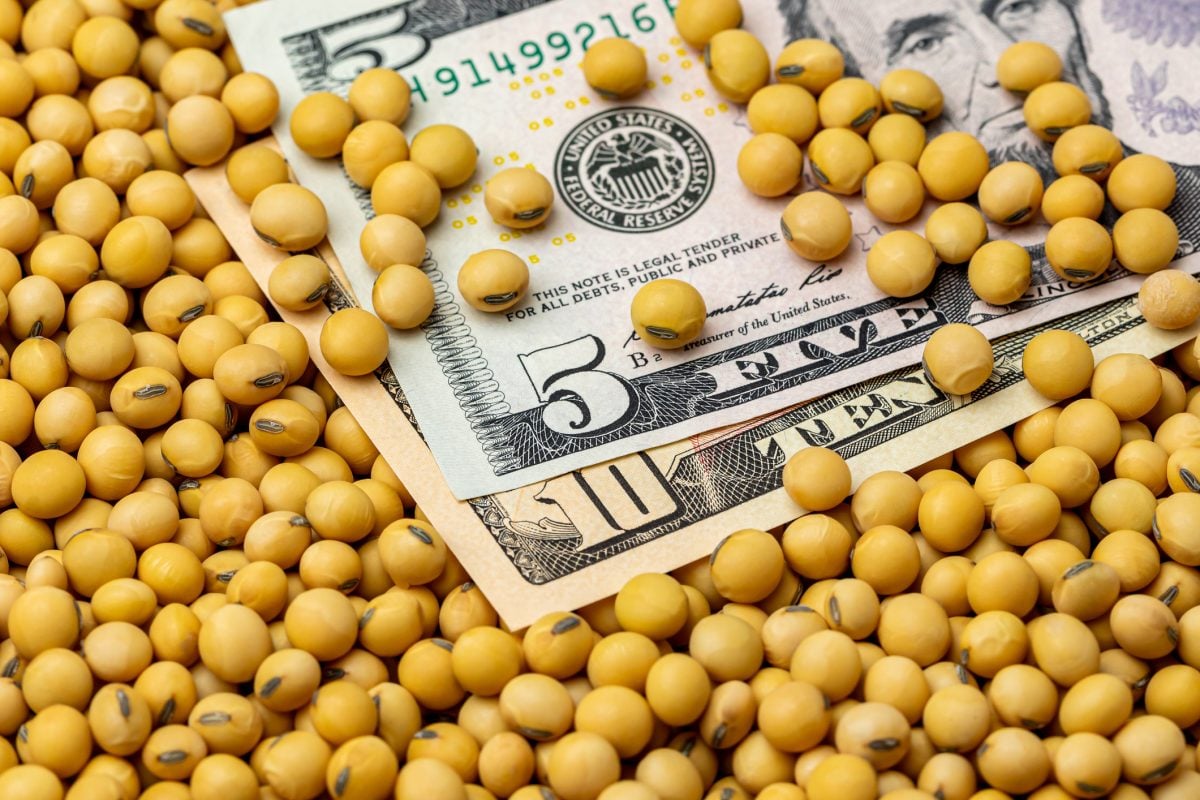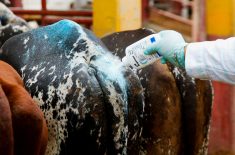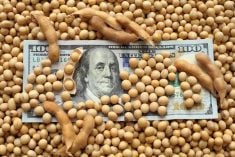CNS Canada — Hog prices might have regained some value in recent days, but many producers are still a long way from profitability, according to the chair of Manitoba Pork.
That’s why lenders such as Farm Credit Canada, who show they understand the needs of producers who are dependent on commodity markets, are appreciated, said George Matheson, a hog producer at Stonewall, Man., about 35 km north of Winnipeg.
“It’s good to see the support like that from the lending community — that they’re sensitive to the situation that hog producers are in,” he said.
Read Also

U.S. grains: Soybean futures hover near 15-month high after China buys U.S. cargoes
Chicago Board of Trade soybean futures hovered near a 15-month high on Wednesday after trade sources said China made its first purchases from the autumn U.S. harvest ahead of a summit between leaders Donald Trump and Xi Jinping.
Although hog prices have recovered somewhat recently, he said many operators are still a long way from being able to generate profits.
He said he shipped a load of 100 hogs during the last two weeks and considered it a big win to get break-even prices.
“But two to three weeks ago, I was looking at probably losing in the neighbourhood of probably $35 per hog.”
He said he’s not sure what’s sparking the recent rebound, but doubts it is a long-term phenomenon, with a huge oversupply situation in the United States.
To help alleviate financial stress, FCC announced Tuesday it will offer more lenient repayment terms on loans for hog producers caught up in the recent price crash, caused by international trade disputes.
Barry Watson, FCC’s acting senior vice-president for the Prairie region, said the federal ag lender would work with hog producers facing financial difficulties to come up with solutions. That could mean deferred principal payments or adjustments to loan repayment schedules.
Oversupply in the U.S. has caused drastic and abrupt hog price declines in Canada, he said. Canada bases its hog prices on the Chicago Mercantile Exchange.
“In Canada here, it has probably had a 30 per cent negative impact on our pork prices, at least in the recent past and it’s likely that the months ahead are going to be tougher slogging as well,” said Watson.
To explain the reasons behind the skid in hog prices, one needs to look at protectionist policies in the U.S., which led to both China and Mexico applying tariffs to U.S. pork, in retaliation for U.S. tariffs on their goods.
China has levied a 62 per cent tariff on American pork; Mexico has applied a 20 per cent tariff. Those tariffs have significantly curtailed U.S. pork exports, even as U.S. producers show no signs of reducing production.
Matheson admitted he’s unsure about the technical reasons behind the market’s sudden resurgence, albeit temporary, but added that sometimes reason has nothing to do with it.
“I wonder if fear of African Swine fever is putting some emotion into the equation. I’m not sure.”
ASF has been spreading through China, where 29 outbreaks have been reported since Aug. 3, leading to almost 40,000 animals being culled.
The disease recently has spread to Western Europe, where it was found in Belgium. As of Sept. 25, eight cases were confirmed there.
Worldwide, ASF has infected more than 360,000 pigs and wild boars in 2018, counting only those that have been reported to the World Organization for Animal Health. It is believed to have been transmitted to Eurasia from Africa in 2007.
The disease can kill infected animals within 10 days. Once it is detected on a farm, the entire pig herd on that farm must be destroyed. It is not, however, a human-health risk.
Whatever the cause of the turnaround in prices, Matheson said it helps. “I’m not quite sure myself what the cause of that rebound is, but we’re glad to see it.”
His recent hog shipment earned him an average of $157 per animal, he said. “So it’s not great, but considering the time of year and what was forecast at one time, I’ll take it, that’s for sure.”
But the price still falls short of where he thinks producers need to be to earn a reasonable living. “Considering inflation in this day and age, I would say if a producer could average $200 (over a year) for a hog, considering feed costs, labour costs, construction costs, I think most producers would say they could live on that.
“But we’re a long ways below that.”
FCC’s Watson said the key is for struggling producers in any sector to reach out to their lending institutions to explore possible assistance.
He also noted risk management tools producers can use to their advantage; forward contracts and hedging programs, for example, can smooth out bumps in the market.
FCC is also monitoring the current grain situation, he said. Untimely harvest precipitation has delayed harvest across large parts of the Prairies, especially in central and northern areas of the grain belt. But at least for now, there is still time for farmers to get the crop in, he said.
Federal Agriculture Minister Lawrence MacAulay’s office said in an emailed response that the federal government wants to reassure farmers that programs exist to help them manage the potential impacts caused by current low prices.
Farmers can draw on AgriInvest account balances, and those enrolled in AgriStability may qualify for support under that program.
AgriStability offers assistance for income losses of at least 30 per cent from a producer’s historical reference margin. Up to 70 per cent of losses greater than 30 per cent are covered.
As well, cash advances of up to $400,000 are available through the Advance Payments Program. The first $100,000 is interest-free, MacAulay’s office stated.
— Terry Fries writes for Commodity News Service Canada, a Glacier FarmMedia company specializing in grain and commodity market reporting.












